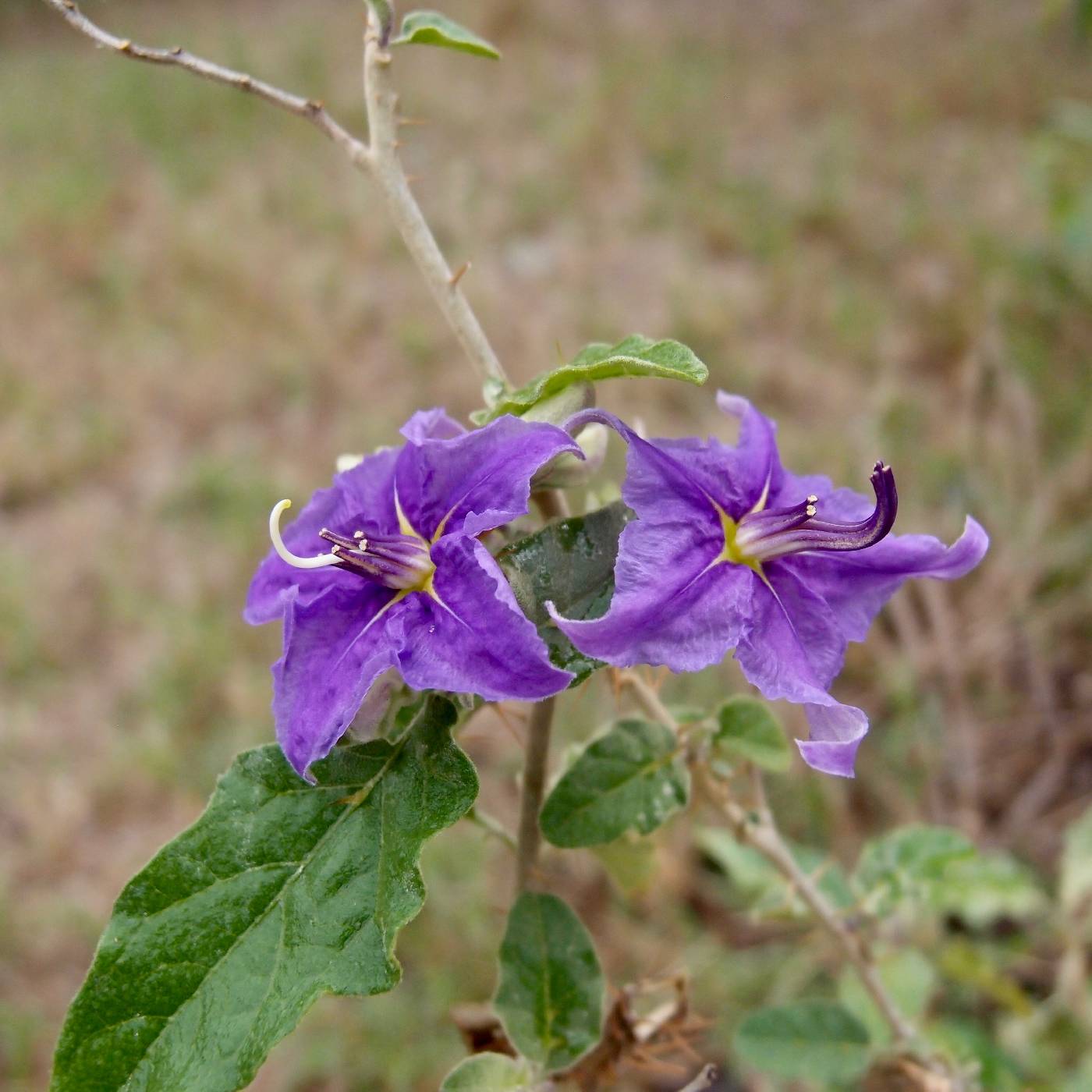Solanum
|
Family: Solanaceae |
PLANT: Annual or perennial herbs and shrubs in ours, some armed with prickles, the surfaces often hairy, the hairs simple, branched, or stellate, sometimes glandular. LEAVES: petiolate, simple, to pinnately compound, the margins entire, dentate to deeply lobed. INFLORESCENCE: mostly borne between nodes, often lateral (opposite a leaf on stem), uniflorous to complex cymes. FLOWERS: (4-)5-merous, actinomorphic to zygomorphic; calyx sometimes accrescent in fruit; corolla rotate to broadly campanulate; stamens sometimes unequal; anthers basifixed, oblong to lanceolate-linear, opening by terminal slits or pores; filaments shorter than anthers; stigma capitate. FRUITS: berries, remaining fleshy or becoming dry; seeds wingless, lenticular to flattened-reniform. NOTES: 18 spp. in AZ, ca. 1400 spp. Worldwide, especially in S. Amer. (Bohs 2001). Known as “the deadly nightshades” due to high concentrations of alkaloids in the vegetative and reproductive structures of some species. The genus contains important agricultural crops such as tomato (S. lycopersicum), potato (S. tuberosum), eggplant (S. melongena), and many regionally cultivated species. Solanum has also been used medicinally worldwide, for example, in the American Southwest a preparation of S. elaeagnifolium was used in treating ear, nose, and throat ailments, as well as eye infections and toothaches (Rea 1997). REFERENCES: Scott T. Bates, Frank Farruggia, Edward Gilbert, Raul Gutierrez, Darin Jenke, Elizabeth Makings, Erin Manton, Douglas Newton, and Leslie R. Landrum. Vascular Plants of Arizona: Solanaceae Part Two: Key to the genera and Solanum. CANOTIA 5(1):1-16. Cor rotate or broadly campanulate; filaments very short; anthers oblong to lanceolate or linear, connivent or connate around the style, opening (in our spp.) by terminal pores or short terminal clefts; fr a many-seeded berry, the seeds mostly wingless; herbs, shrubs, or small trees, the infls in our spp. generally arising opposite or between the lvs. Perhaps 1500 spp., widespread, but best developed in trop. Amer. All our spp. bloom in summer, often continuing until the fall. Gleason, Henry A. & Cronquist, Arthur J. 1991. Manual of vascular plants of northeastern United States and adjacent Canada. lxxv + 910 pp. ©The New York Botanical Garden. All rights reserved. Used by permission. |

